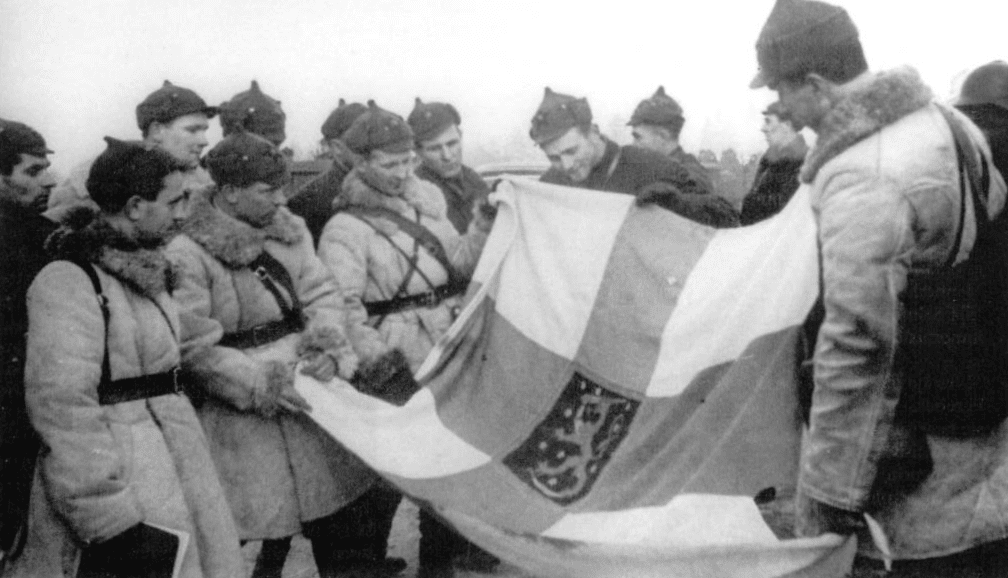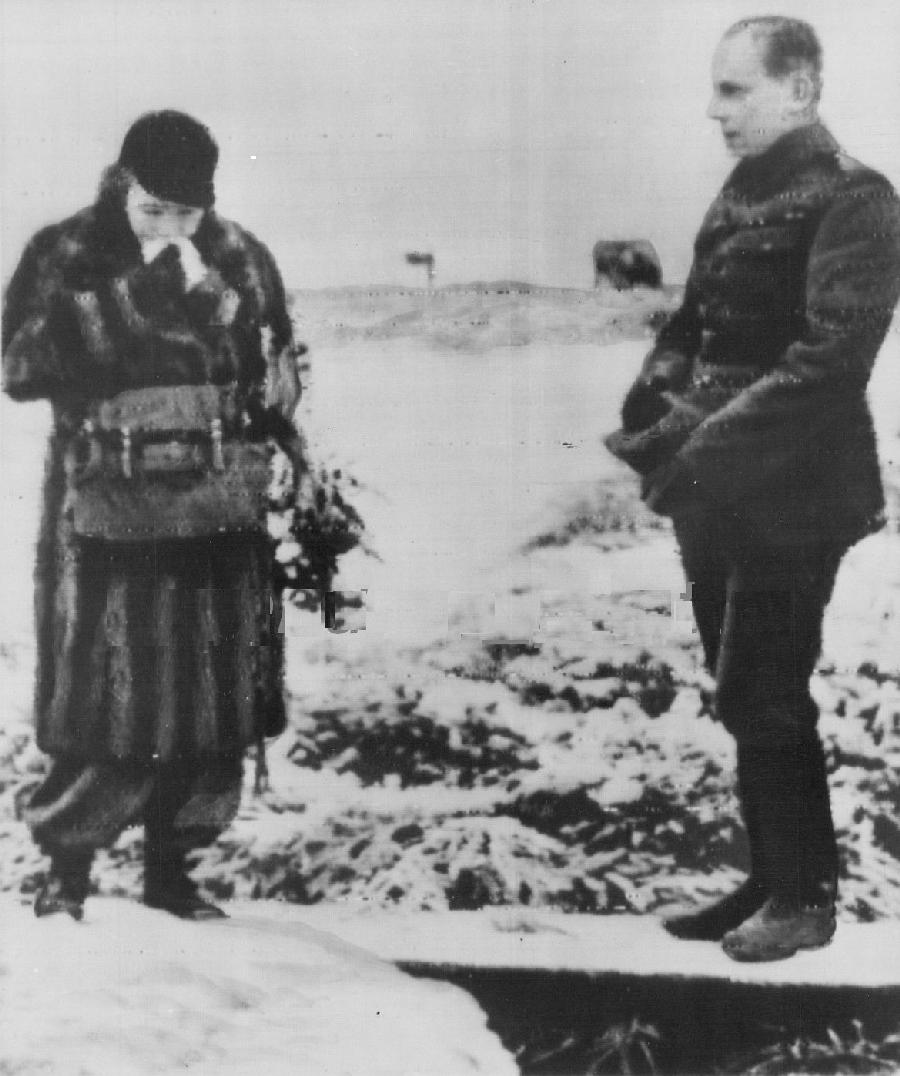Finnish Winter War Uniform

Instructor at the Light Services Combat School supervises practice with the Suomi sub-machine gun; Finland, autumn 1939.The Finnish army was one of the smallest in Europe and theexpected little opposition. But the Soviet invasion found the Finns well prepared; and they turned to their advantage the sub-zero temperatures and deep snow which in any cased favoured a defensive.The main Finnish defence, the, held until 12 February 1940, although once it was breached there was no alternative but to sue for peace. For an army which never exceeded 200,000 men, Finnish losses were very high: 25,000 killed and 45,000 wounded.There was talk of Allied intervention since the Soviet Union had signed a non-aggression pact with ‘s Germany, but the only country to make a sizeable contribution was Sweden which provided weapons, a squadron of aircraft and two battalions of infantry. Volunteers from a number of countries including Norway, Italy, Britain and the United States of America were formed into a volunteer battalion, but it was not ready in time to take part in the fighting.
A Finnish 75mm mountain howitzer engages the Russians in Karelia. Guns andare scare.In addition there was an independent cavalry brigade which was made up of a staff, two cavalry regiments, a rifle battalion mounted on bicycles and a horsebattery.The whole army posed only 100 Bofors AA guns which were reserved for home defence.The Army had only minimal experience of tank warfare; but the densely wooded terrain of Finland reduced the role of the tank to that of infantry support. The Finnish State Aircraft Factory at Tampere went into license-production with the Dutch Fokker C.X two-seat bomber and reconaissance plane in 1938. These aircrafts were used until the end of WW2.The Finnish Air Force was not an independent arm but formed part of the Army under its own commander. The Air Force was based on the British model with many instructors and some aircraft being supplied by Great Britain. At the beginning of the war, however, the Air Force was much below establishment and had practically no reserve. The front-line strength was 200 aircraft, but only 108 were operational.
Finnish coastal battery at Hango.The greatest problem faced by the Finnish Navy was the shortage of ice-free ports. Apart from three ports on the Murmansk coast, in winter all other ports were seldom ice-free and often completely frozen.To carry out its principal task of coastal defence, the Finnish navy had at its disposal 3 gunboats, 30 minelayers and minesweepers, and a number of motor launches and auxiliaries. There were also seven motor torpedo boats of British and Italian design, and five modern submarines.


Rest of a group of German infantrymen.The field-gray uniform of the was a further development of the. The final form of this uniform was introduced in several steps from 1935 onward.In thethere were two kinds of uniform: standard uniforms, which were issued by the Wehrmacht, or from the wearer personally at their own or state-cost tailor-made uniforms.During the peace period and even during the first year of the war, tailor-made uniforms were often used by officers, but as these were found to be impractical, uncomfortable, and expensive to replace in combat, more and more standard uniforms were used. The field-gray standard uniform was standardized in the army and consisted of the basic components steel helmet, side cap, field blouse, covering coat, trousers and march boots.Mountain troops were given the same uniform, but the side cap was replaced by a mountain cap, as well as the pants and boots by long, baggy trousers with elastic leggings at ankles and mountain boots.Mounted members of the army were represented not only in the cavalry, but mainly in the mass of the units, which still depended on horses for transport or reconnaissance. These men were given leather riding pants and heavy riding boots.A special black uniform for the crews of closed combat vehicles was also introduced in 1935.
This uniform consisted of a black, padded beret, which also served as a protective helmet, a two-breasted jacket and long baggy trousers.This uniform, which was worn at first just with the vehicle, was at the same time practical and popular. The black color, which was supplemented by a silver skull insignia on the beret, had a dramatic appearance and added a little to the esprit of the young arm. Thus, from the beginning of 1940, this uniform was issued to the crews of the self-propelled guns in a field-gray version. Soldiers of thein 1940 ( of the author).In general, the German clothing industry had achieved miracles to keep up with the expansion of the army, and German uniforms were a rare combination of tradition and modernity, comfort and convenience.Nevertheless, there were not enough uniforms to completely equip the strong-growing German army. This led to the Germans using the captured uniforms of the Austrian, Czechoslovak, and Polish armies. Insignia (I), from left to right: Field Marshal, Colonel-General, General of Infantry, Lieutenant-General, Major-General, Colonel (Infantry), Lieutenant-Colonel (Mountain Troops), Major (Cavalry), Captain (Tanks), Lieutenant (Transport), 2nd Lieutenant (Artillery). Bottom row the arm patches for camouflage clothing.
The color of the arms of service gathers the shoulder pieces.Awards and decorations were comparatively rare at the beginning of the war, limited to World War One, long service, Nazi party badge and from the Spanish civil war.It was, however, characteristic of the German soldier to carry his distinctions and decorations, even though he became a target for enemy snipers. German Army Insignia (II), from left to right: Staff Sergeant (Tanks), sergeant-major (Panzer grenadiers), Senior Sergeant (Motor Recon), Sergeant (Engineers), Corporal (Signals), Infantryman (Private), Staff Lance-Corporal, Senior Lance-Corporal, Lance-Corporal, Private 1st Class, Artillery Senior Sergeant (early pattern). Bottom row the arm patches for camouflage clothing. The color of the arms of service gathers the shoulder pieces. German uniforms in the Western DesertIn contrast to Great Britain, France, and Italy, Germany had no colonial empire, and when, at the end of 1940, it became apparent that the Wehrmacht would soon be involved in a desert war, a whole range of tropical clothing and equipment had to be designed practically overnight.Without practical experience and under pressure of time, the Germans decided to copy uniforms from nations with a colonial empire. Steel helmet of the Wehrmacht (front) and German tropical helmet of the Afrika Korps.When the first German troops landed in Tripoli in February 1941, they exchanged their field-gray uniforms for tropical uniforms. With their great sun helmets, well-cut vests and trousers and laced field boots, they could not conceal how British soldiers appear in India during the pre-war period.Soon, however, the Germans discovered that their pseudo-functional uniform, which was actually quite well-chosen according to Northern European standards, had little in common with the light and somewhat sloppy dress of the natives and colonial troops.
Wwii Italian Uniforms
Two members of the Afrika Korps.Thus, the German soldiers in the desert began to assemble their own uniforms, which were most practical for them. From now on, the typical appearance of a German desert fighter consisted of a field cap with a large umbrella protecting the eyes from the burning sun. Price: $73.25Uniforms on the Eastern FrontAt the beginning of, the invasion of Russia, the German uniform was fundamentally the same as at the beginning of the war.However, some rationalization measures introduced at the outbreak of war also reached the troops. The most important changes were that the army uniforms were beginning to lose the dark bluish-green badge cloth, which had been worn on the field blouse and greatcoat collar as well as on the shoulder straps and the rank badges on the sleeve.